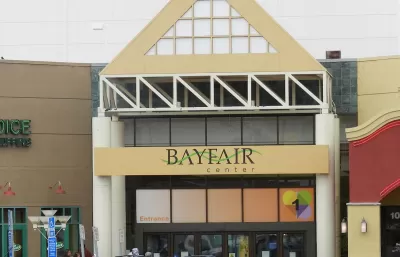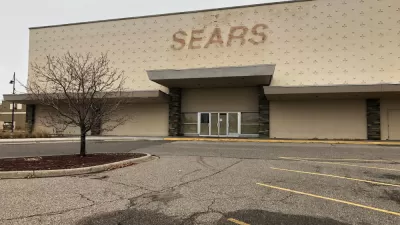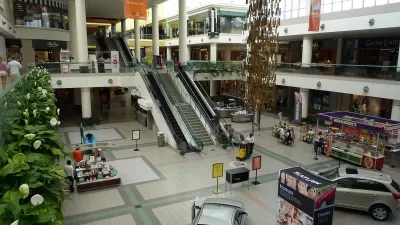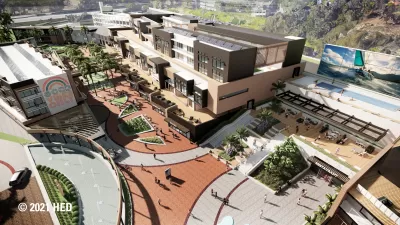Dead malls across the Bay Area are being transformed into R&D centers, housing, and transportation hubs.

With more and more American malls closing, their potential for redevelopment is growing. In the San Francisco Bay Area, a 400,000-square-foot project will reimagine the former Bayfair Center mall into a research and development center for tech companies.
As Chase Hunter explains in an article on SiliconValley.com, “The mall’s interior officially closed in early 2023, but the loss of Macy’s in April 2024 – a store that had been a tenant since the mall opened in 1957 – marked a turning point as developers focused on creating a new iteration of the property.” The property provides convenient access to existing infrastructure including the power and air conditioning necessary for R&D centers.
The trend is catching on in other parts of Silicon Valley. “In the South Bay, the city of Cupertino agreed in July with the owners of the Vallco Mall property to permit the construction of 2,700 housing units, with about a third set aside for affordable housing. And Prologis, a San Francisco-based real estate company that owns Hilltop Mall in Richmond, hopes to create a data center, a transportation hub and hundreds of housing units in collaboration with the city’s specific plan to redevelop the 145-acre area around the mall.”
Cities are taking notice, in some cases adjusting their zoning codes to make it easier for developers to adaptively reuse malls and encourage transit-oriented, mixed-use development. Meanwhile, the Bay Area Rapid Transit (BART) agency moved up the timeline for a station near Bayfair, “citing the Bay Fair station’s high rankings in development streamlining, market readiness for offices and development capacity.”
FULL STORY: What will happen to the Bay Area’s millions of square feet of closed mall space?

Study: Maui’s Plan to Convert Vacation Rentals to Long-Term Housing Could Cause Nearly $1 Billion Economic Loss
The plan would reduce visitor accommodation by 25,% resulting in 1,900 jobs lost.

North Texas Transit Leaders Tout Benefits of TOD for Growing Region
At a summit focused on transit-oriented development, policymakers discussed how North Texas’ expanded light rail system can serve as a tool for economic growth.

Using Old Oil and Gas Wells for Green Energy Storage
Penn State researchers have found that repurposing abandoned oil and gas wells for geothermal-assisted compressed-air energy storage can boost efficiency, reduce environmental risks, and support clean energy and job transitions.

Private Donations Propel Early Restoration of Palisades Playground
Los Angeles has secured over $1.3 million in private funding to restore the Pacific Palisades playground months ahead of schedule, creating a modern, accessible space that supports community healing after recent wildfires.

From Blight to Benefit: Early Results From California’s Equitable Cleanup Program
The Equitable Community Revitalization Grant (ECRG) program is reshaping brownfield redevelopment by prioritizing projects in low-income and environmental justice communities, emphasizing equity, transparency, and community benefits.

Planting Relief: Tackling Las Vegas Heat One Tree at a Time
Nevada Plants, a Las Vegas-based nonprofit, is combating the city’s extreme urban heat by giving away trees to residents in underserved neighborhoods, promoting shade, sustainability, and community health.
Urban Design for Planners 1: Software Tools
This six-course series explores essential urban design concepts using open source software and equips planners with the tools they need to participate fully in the urban design process.
Planning for Universal Design
Learn the tools for implementing Universal Design in planning regulations.
Ascent Environmental
Borough of Carlisle
Institute for Housing and Urban Development Studies (IHS)
City of Grandview
Harvard GSD Executive Education
Toledo-Lucas County Plan Commissions
Salt Lake City
NYU Wagner Graduate School of Public Service





























